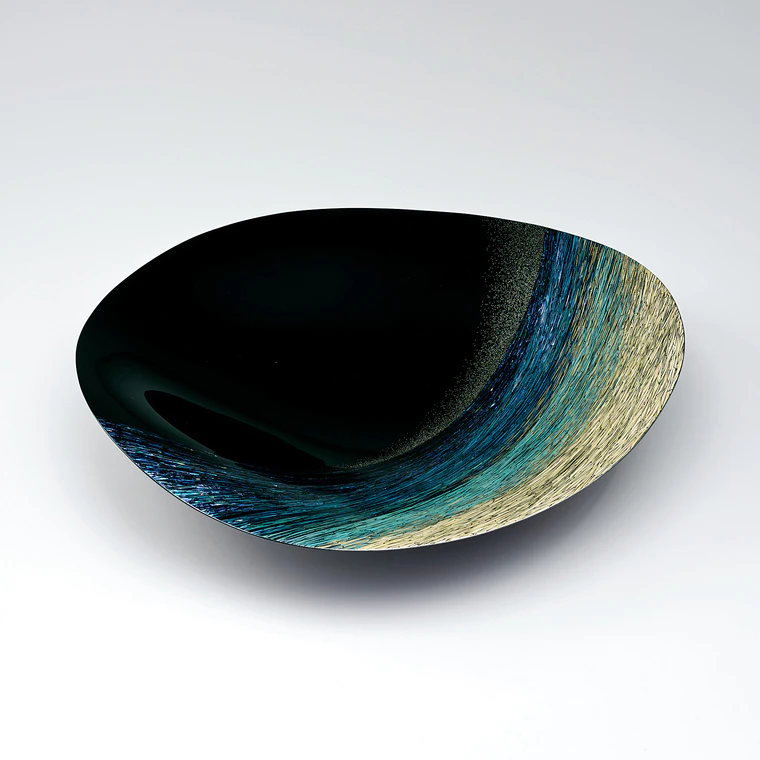Kanshitsu food vessel with design in irokirigai. “Sea”
H 11.0 x W 44.0 x D 40.0 cm,Year.2016Shimpei Matsuzaki
1981 -- Lacquerware
- Price Range Please Inquire
- Awards at Japan Kōgei Assoc. Exhibitions : 7
Description
-
CategoryLacquerware
-
DimensionsH 11.0 x W 44.0 x D 40.0 cm
-
Year presented2016
-
RarityUnique
Techniques Used
Dry lacquer
For works of dry lacquer (kanshitsu), first a clay form is created and plaster is used to take a mold of the form. Next, repeated layers of hemp cloth and lacquer are applied to the mold until they are built up to the desired thickness. Finally, the mold is removed and additional coats of lacquer are applied to finish the piece. The hemp fibers are strengthened when the lacquer bonds with them, making dry lacquer an excellent technique for creating sturdy forms with a significant degree of freedom.
Selected exhibitions
- The 63th Japan Traditional Kōgei Exhibition (2016)
- Selected
Please feel free to contact us to commission work, check artworks available for purchase etc.

